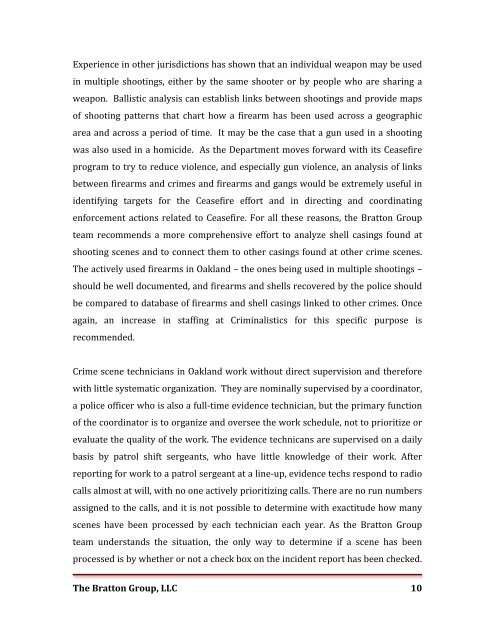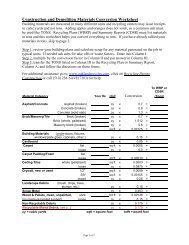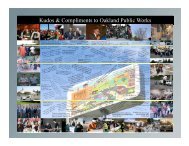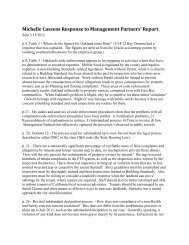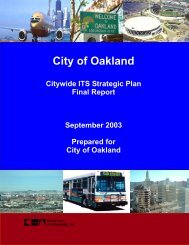The Bratton Group Report - City of Oakland
The Bratton Group Report - City of Oakland
The Bratton Group Report - City of Oakland
You also want an ePaper? Increase the reach of your titles
YUMPU automatically turns print PDFs into web optimized ePapers that Google loves.
Experience in other jurisdictions has shown that an individual weapon may be used <br />
in multiple shootings, either by the same shooter or by people who are sharing a <br />
weapon. Ballistic analysis can establish links between shootings and provide maps <br />
<strong>of</strong> shooting patterns that chart how a firearm has been used across a geographic <br />
area and across a period <strong>of</strong> time. It may be the case that a gun used in a shooting <br />
was also used in a homicide. As the Department moves forward with its Ceasefire <br />
program to try to reduce violence, and especially gun violence, an analysis <strong>of</strong> links <br />
between firearms and crimes and firearms and gangs would be extremely useful in <br />
identifying targets for the Ceasefire effort and in directing and coordinating <br />
enforcement actions related to Ceasefire. For all these reasons, the <strong>Bratton</strong> <strong>Group</strong> <br />
team recommends a more comprehensive effort to analyze shell casings found at <br />
shooting scenes and to connect them to other casings found at other crime scenes. <br />
<strong>The</strong> actively used firearms in <strong>Oakland</strong> – the ones being used in multiple shootings – <br />
should be well documented, and firearms and shells recovered by the police should <br />
be compared to database <strong>of</strong> firearms and shell casings linked to other crimes. Once <br />
again, an increase in staffing at Criminalistics for this specific purpose is <br />
recommended. <br />
Crime scene technicians in <strong>Oakland</strong> work without direct supervision and therefore <br />
with little systematic organization. <strong>The</strong>y are nominally supervised by a coordinator, <br />
a police <strong>of</strong>ficer who is also a full-‐time evidence technician, but the primary function <br />
<strong>of</strong> the coordinator is to organize and oversee the work schedule, not to prioritize or <br />
evaluate the quality <strong>of</strong> the work. <strong>The</strong> evidence technicans are supervised on a daily <br />
basis by patrol shift sergeants, who have little knowledge <strong>of</strong> their work. After <br />
reporting for work to a patrol sergeant at a line-‐up, evidence techs respond to radio <br />
calls almost at will, with no one actively prioritizing calls. <strong>The</strong>re are no run numbers <br />
assigned to the calls, and it is not possible to determine with exactitude how many <br />
scenes have been processed by each technician each year. As the <strong>Bratton</strong> <strong>Group</strong> <br />
team understands the situation, the only way to determine if a scene has been <br />
processed is by whether or not a check box on the incident report has been checked. <br />
<br />
<strong>The</strong> <strong>Bratton</strong> <strong>Group</strong>, LLC <br />
10


